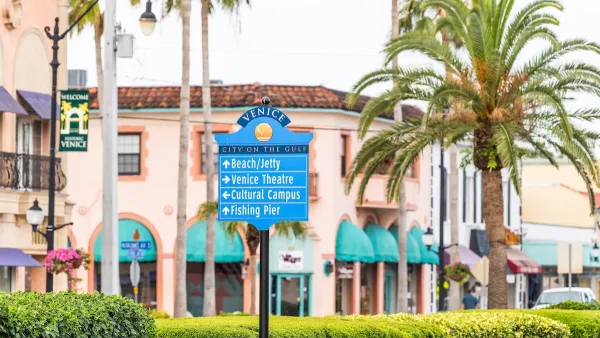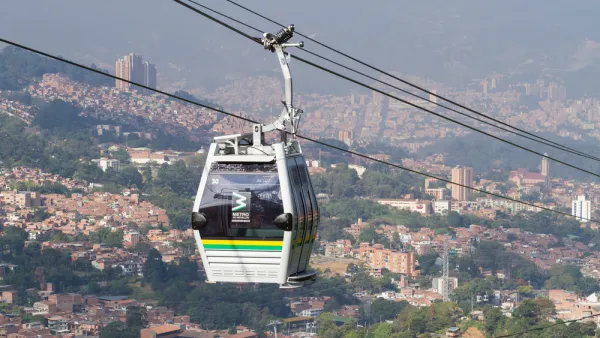Steve Rose surveys the scene at this year's Architecture Biennale in Venice, where he observes that the mood has shifted: "away from starchitecture towards something quieter, more collaborative and utopian."
According to Rose, this year's Biennale - regularly the most important event on the architectural calendar - reflects the new reality for a field trying to regain its footing following the crash of the high-flying real estate market of the 2000s.
"The theme for this year's Biennale, chosen by its British director David Chipperfield,
is Common Ground. It's a choice that hints at architecture's need to
refocus on issues like engagement and communication, on its need to
establish shared values. But as the Spanish students show, there are
chasms splitting the world of architecture. A divide is opening up –
generationally, economically and philosophically. The starchitects of
Trujillo's second reality are still here, but the appetite for
celebrations of individual genius, and isolated, beautifully crafted
buildings, seems to be dissipating. To co-opt the language of the Occupy
movement, the big names are starting to look like architecture's 1%."
In the search for stable ground, architects are gazing backwards to the mid-20th century when the pendulum had firmly swung in the other direction - away from designing and developing the trophy homes and buildings for the global 1%, and towards a social utopianism.
"Those were the days: when architects knew what needed to be done and
governments had the money to let them do it," says Rose. "Dutch superstars OMA,
for example, celebrate the work of anonymous architects in public
authorities across Europe from the 1960s and 70s. As OMA architect Reinier de Graaf
puts it, the era was 'a short-lived, fragile period of naive optimism –
before the brutal rule of the market economy became the common
denominator.'"
FULL STORY: Starchitects and squatters: Venice Architecture Biennale

National Parks Layoffs Will Cause Communities to Lose Billions
Thousands of essential park workers were laid off this week, just before the busy spring break season.

Retro-silient?: America’s First “Eco-burb,” The Woodlands Turns 50
A master-planned community north of Houston offers lessons on green infrastructure and resilient design, but falls short of its founder’s lofty affordability and walkability goals.

Delivering for America Plan Will Downgrade Mail Service in at Least 49.5 Percent of Zip Codes
Republican and Democrat lawmakers criticize the plan for its disproportionate negative impact on rural communities.

Test News Post 1
This is a summary

Test News Headline 46
Test for the image on the front page.

Balancing Bombs and Butterflies: How the National Guard Protects a Rare Species
The National Guard at Fort Indiantown Gap uses GIS technology and land management strategies to balance military training with conservation efforts, ensuring the survival of the rare eastern regal fritillary butterfly.
Urban Design for Planners 1: Software Tools
This six-course series explores essential urban design concepts using open source software and equips planners with the tools they need to participate fully in the urban design process.
Planning for Universal Design
Learn the tools for implementing Universal Design in planning regulations.
EMC Planning Group, Inc.
Planetizen
Planetizen
Mpact (formerly Rail~Volution)
Great Falls Development Authority, Inc.
HUDs Office of Policy Development and Research
NYU Wagner Graduate School of Public Service




























